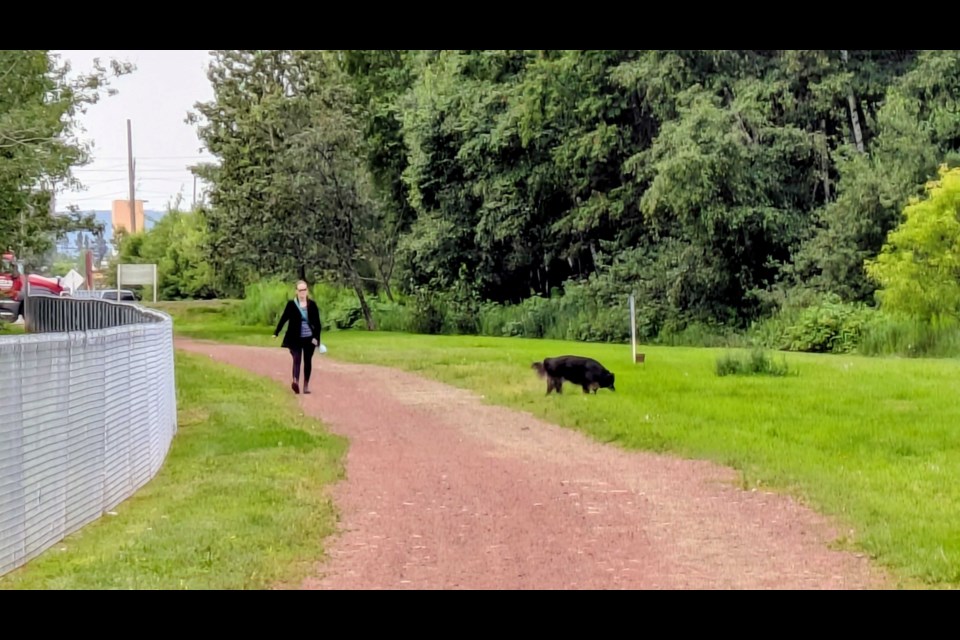THUNDER BAY — Barring any significant new issues, the city's shelter village will be built in the Intercity area.
In a series of events Coun. Shelby Ch'ng described as causing "whiplash", city council has voted against 114 Miles St. East as the site for the city's temporary shelter village, but approved another site which had received little attention at council before Monday's vote: the Hillyard site.
The Hillyard site is a location on 8th Avenue, off Central Avenue in the Intercity area. It is next to the Hillyard off-leash dog park in an otherwise largely commercial area.
With a margin of one vote, council reversed its previous decision to build the shelter village on Miles Street, voting 7-6 against the location.
Mayor Ken Boshcoff cast the deciding votes against the Miles Street site and against his own amendment to that motion, despite a statement to Newswatch on Friday that he would support the motion if it was amended.
Couns. Rajni Agarwal, Albert Aiello, Dominic Pasqualino, Mark Bentz, Trevor Giertuga, Michael Zussino also voted against, while Couns. Brian Hamilton, Kasey Etreni, Andrew Foulds, Greg Johnsen, Kristen Oliver and Ch'ng voted in favour.
Boshcoff's amendment would have required administration to report back by mid-2027 with a full report of the status of the village site, and formally allow council to provide alternate direction for the temporary village following the report.
Bentz asked deputy city clerk Dana Earle if the amendment would also apply to the Hillyard and Cumberland sites included in the staff site report, as well as Miles, but Earle said Boshcoff’s amendment was written to refer to the Miles location.
Bentz said he would not support the amendment because it didn’t cover all three site options.
Boshcoff voted against his amendment, saying that the Hillyard site was the favourable option, stating that it “checks all the boxes” in terms of costs and benefits for the community.
Boshcoff's amendment lost in the same 7-6 split vote as the Miles Street site.
With the Miles Street location officially off the table, Bentz made a motion to discuss the Hillyard site in place of Miles Street.
However, since the resolution had some neighbourhood-specific items attached to it — like a $125,000 annual contribution to the Fort William BIA and an additional $50,000 for cleanup efforts in the downtown south core administration asked for a brief recess to assist with Bentz’s motion for a new recommendation.
When they returned, city manager John Collin said staff would recommend removing the money the city would be providing to the Fort William BIA and increasing the budgeted cap for operating the shelter village from $1.5 million to $1.8 million to address transportation issues at the Hillyard site and an estimated cost increase of $300,000.
Bentz refused to accept administration's recommendation, stating that it was never his “intention to increase the budget cap” in his motion for the Hillyard site.
In Bentz’s recommendation, the budget would remain the same. He said it was a compromise.
Etreni spoke to the staff report on the site, which highlighted the challenges at the Hillyard site.
The Hillyard site scored lower than Miles Street in staff's assessment in part because it is adjacent to both a publicly accessible active transportation corridor and a public off-leash dog park, creating an increased risk of conflict between shelter village residents and corridor or park users. “Particularly in these discreet, lightly populated areas where few witnesses would be present in the event of an incident,” the report states.
Etreni said that the businesses operating in the Hillyard area are not open overnight; however, “they do have fences people can climb over.”
Because the Hillyard site was added as an amendment to the site approval motion that had already passed at the council level, a vote in favour would be immediately ratified, and not come back to council for a second vote.
Etreni asked about the implications of referring the Hillyard site back to administration to report back a later date, but withdrew the idea after Collin told her a delay could threaten the viability of the initiative.
Many around the council voiced objections to the lack of opportunity for public input or time for full discussion and second thought, but council ultimately decided to support the Hillyard site in a 9-4 vote.
Boshcoff and Couns. Bentz, Etreni, Ch’ng, Agarwal, Aiello, Oliver, Zussino, and Pasqualino voted yes to the site, while councillors Hamilton, Johnsen, Foulds, and Giertuga voted no.
Ch’ng and Etreni both said they felt "backed into a corner” with their votes due to the time pressures of the project. They both stressed strong opposition to the process in approving the Hillyard site, despite voting in favour.
Nevertheless, the vote is final and will not need to come back to council. Unless staff discover barriers in the process of developing the site, which Collin said could include significant unanticipated objections from the public, the shelter village will be built at that location.
